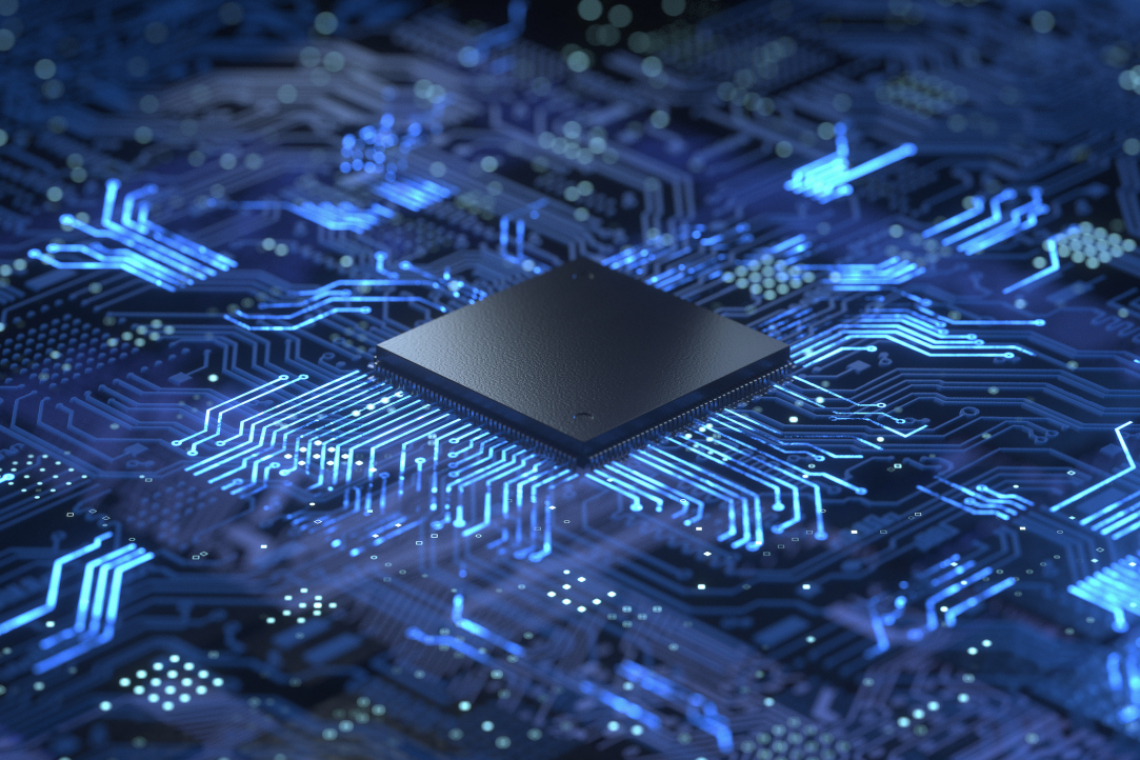At the end of 2023, a 'non-fiction thriller' about the development of computer chips and their significance for our future attracted unusual attention.
Without microchips, no car, no power grid, no internet and no army would be able to function in our present - at least as far as the western, advanced world is concerned. Readers of PLUS don't need to be told this - but for most people, the significance of state-of-the-art chips is a mystery, because although these chips are used in almost all technical devices, they are invisible, almost mystically opaque. However, many people can guess how central their availability is. The high investments of the 'Chip Acts' in the USA and also in Europe, the trade barriers against the competitor China and its threatening gestures towards Taiwan are more clearly perceived - after all, an actual invasion of the important island or even just its partial blockade would have serious consequences for the world market. This is because Taiwan is where TSMC manufactures the most modern semiconductors. It is not without reason that there is increasing talk of 'de-risking', 'reshoring' or 'China +1', i.e. the careful disentanglement of the Western world's excessive dependence on China.
The American historian Chris Miller (Fletcher School of Law and Diplomacy, Tufts University, Massachusetts) takes these developments as an opportunity for a non-fiction book in which he traces the history of computer chips. The title 'Chip War. The Fight for the World's Most Critical Technology' is a bit of a puffery. Miller's book is far less about the feared escalation of trade and technology conflicts with China, a giant that has long since lost its sleep, and more about the rapid development of microelectronics since the Second World War. Miller succeeds in tracing the history of technology and business in this field using the biographies of key players such as William Shockley(Shockley Semiconductor Laboratory), Jack Kilby(Texas Instruments), Gordon Moore(Intel) and Robert Noyce(Intel, Fairchild Semiconductor).
Race of the superpowers
The emergence and miniaturization of semiconductors and transistors, the replacement of the long-used vacuum tubes by HL materials made of silicon really does read like a thriller in this retelling. The emergence of 'Silicon Valley', the rise of Fairchild Semiconductor and the technological race between the USA and the Soviet Union in the field of microelectronics alone make for gripping reading. Miller, who has researched the history of Soviet technology in particular, describes the race between the two superpowers, which stretches from American universities to the 'Special Design Bureau of the Electronics Industry 2' in Leningard, which was created under an unwieldy name, and on into space. Miller also devotes longer chapters to Japan's impressive rise in the electronics industry and the development of ASML's EUV lithography system as the "most complex machine tool in the world". According to Miller, three decades of development, billions in investment and the establishment of a highly ramified supply chain had led to ASML's EUV tools being ready for use in the world's most advanced chip factories by the mid-2010s - even if it had not been clear for a long time whether (and when) this technology would lead to success.
"no national security without cyber security"
The final chapters of Miller's book are devoted to the rise of China, whose rigid political system made it difficult to catch up with the West in semiconductor technology, particularly in terms of Internet surveillance (and therefore knowledge transfer). But for how much longer? So far, China has only been able to achieve respectable successes despite incredibly high investments. The latest developments since 2017, when Xi Jinping, General Secretary of the Communist Party of China, announced that "without cyber security there can be no national security" and without computerization there can be no modernization for China, are like a prelude to the more upbeat mood that can be observed today. The halt in sales of EUV lithography systems from ASML to Chinese companies was just one marker of this new race, which is partly reminiscent of the era of the space race during the Cold War. Overall, Chris Miller knows how to present these developments in an exciting way, but also without theatrical escalation.
Can a non-fiction book like this, written by a historian, also be recommended to engineers and industry experts? Certainly not everyone will be familiar with the social, political and economic background that Miller has worked out and presented in a condensed form. The anecdotes from biographies of engineers, inventors and entrepreneurs in the USA, Russia, China and Japan also contribute to the contemporary color of this history of microelectronics. Readers of technical literature may occasionally find the reading too shallow. But the big picture Miller paints here is not only entertaining, but also cleverly written and can be strongly recommended.



